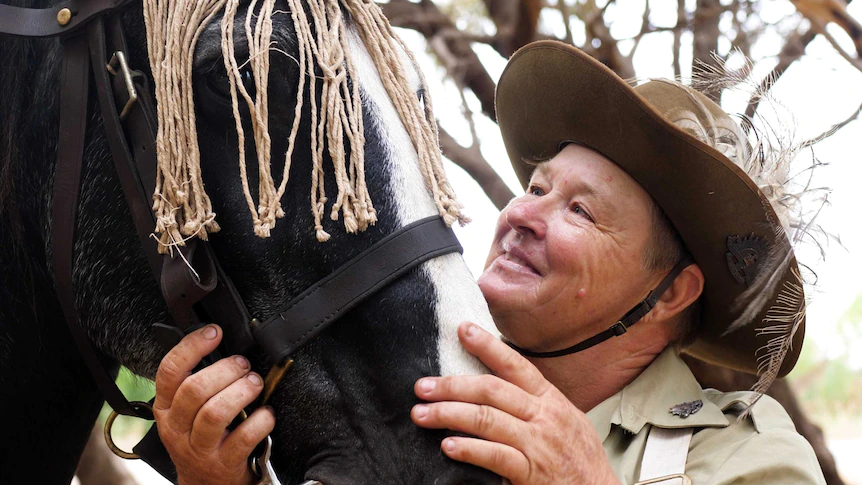[ad_1]
More than 105 years after their forefathers fought on the shores of Gallipoli in World War I, a group of West Australians is healing from modern-day traumas, thanks to their common interest in military history.
These survivors of abuse, anxiety and depression are finding unexpected solace in memorialising the soldiers of 10th Light Horse Regiment who fought for Australia.
So much have they gained from their membership of the Kelmscott-Pinjarra 10th Light Horse Memorial Troop, they now seek to develop an equine healing centre for returned servicemen and women and their families.
Geraldton woman Natasha Pearce was 14 when she first gained an interest in her family’s military past. Her beloved grandfather had died and her grandmother gave her one of the military medals he’d treasured.
Taking the medal in her hand she was overcome with wonder.
She went on to discover the medal had belonged to one of two relatives who’d fought in World War I with the 10th Light Horse.
One of them, Donald McLean, had died at the Battle of the Nek in Gallipoli in 1915.
The other, Fletcher Brand, survived.
Loading
Bonding over trauma
Fast forward many years and a series of abuses has left Ms Pearce with Post-Traumatic Stress Syndrome (PTSS).
As she struggled with associated depression she watched a TV report of a woman talking about the waler horse breed which had served with the 10th Light Horse.
“I felt something in my heart,” Ms Pearce said.
“To see this person in the Light Horse uniform representing my family, it just filled me up with tears and joy and I wanted to be part of it.”
That woman was Verna Holmes of the Kelmscott-Pinjarra 10th Light Horse Memorial Troop, who has gone on to found a Greenough section.
Ms Holmes had also suffered physical and mental trauma and consequent PTSS and the two bonded over their love of the 10th Light Horse Regiment, horses and shared experiences.
Helping ‘dysfunctional’ function well
“The 10th Light Horse, we’re a group of dysfunctioning people, we all suffer from PTSD, anxiety, depression,” Ms Holmes said.
“I like to jokingly say we’re a group of dysfunctional people that function incredibly well with the bond that we have between us.”
Ms Holmes was drawn to the 10th Light Horse for its use of the breed of horses called “walers”.
She was fascinated by their role in the war, devastated that the soldiers were forced to leave their mounts behind, and took up the task of breaking in her own waler.
“The animals seem to accept you for what you are, warts and all,” she said.
“They don’t care what you look like, what you’ve done, what you have and what you don’t have.
“And when you are at your lowest point, they pull you out of it — you have to look after them.
“There are days when you just can’t get out of bed, you can’t operate, you can’t feed yourself, but you do it for your horse.”
So much have they gained from their involvement in the Light Horse Memorial Troop that the Kelmscott-Pinjarra chapter is now seeking to develop an equine therapy facility for returned service men and women, and their families.
“We would just like to set up an area that people can relax, sit down and talk, and feel the comfort that you can get from the horses, the dogs,” Ms Holmes said.

